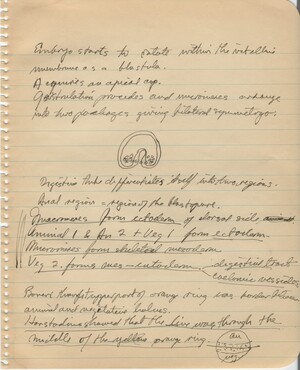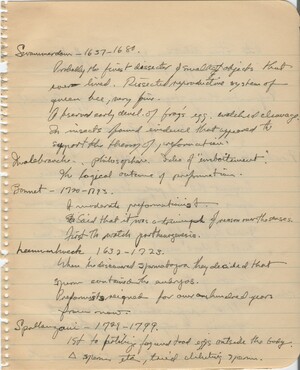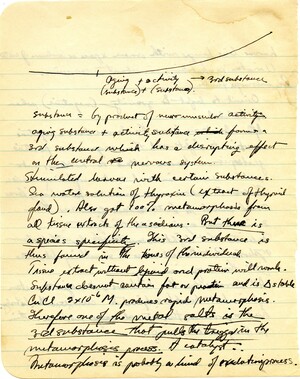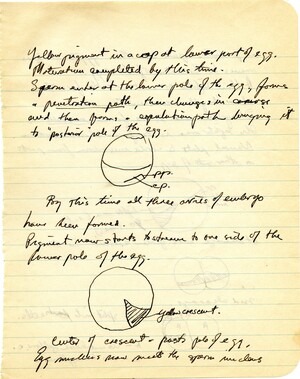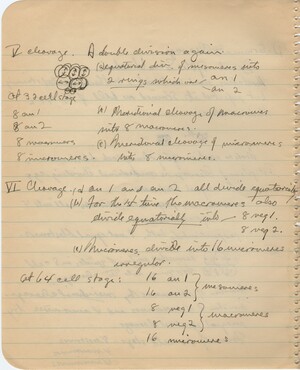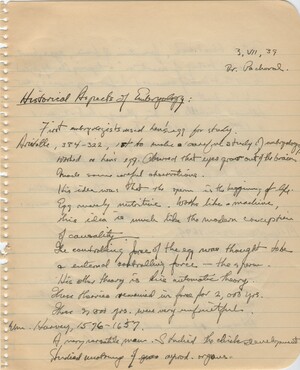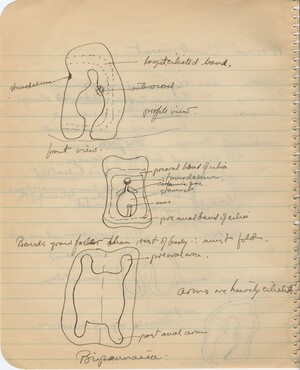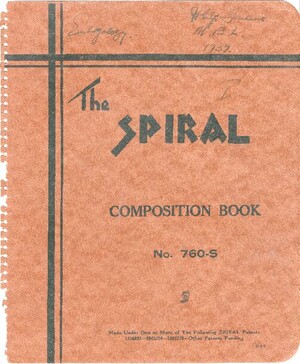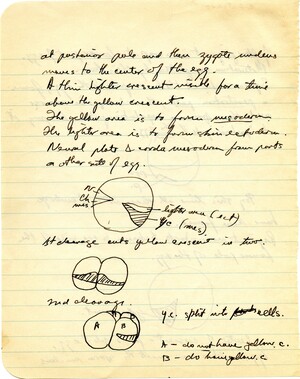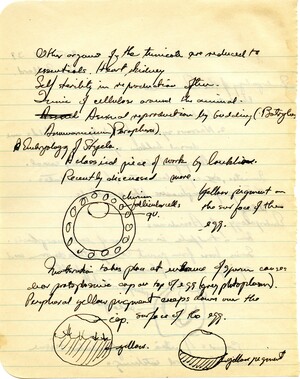Notes
Notes from Oscar Schotte's lecture. Trinkaus continues his notes from the previous page on early development of the sea urchin embryo
Notes from Charles Packard's lecture. Trinkaus continues his notes from Packard's morning lecture on the history of embryology (begin page 81) with more information about Harvey, then Preformation, and Malpighi
Notes from Charles Packard's lecture. Trinkaus continues his notes from Packard's morning lecture on the history of embryology (begin page 81) with information on Swammerdam, Malebranche, Bonnet, Leeuwenhoek, and Spallanzani
Notes from Caswell Grave's lecture. Trinkaus begins with a graph, "aging + activity", and takes notes on different substances during development of the ascidian embryo
Notes from William Ballard's lecture. Trinkaus continues his notes on the embryology of Styela with information on fertilzation (includes two diagrams)
Notes from Oscar Schotte's lecture. Trinkaus continues his notes from the previous page on the cleavage of the sea urchin embryo with information about the 5th (with diagram) and 6th stages of cleavage
Notes from Charles Packard's morning lecture, "Topics from the history of embryology". Trinkaus takes notes on the history of embryology beginning with Aristotle and William Harvey
Notes from Oscar Schotte's lecture. Trinkaus continues his notes on normal development of the echinoderm egg from the previous page with 3 labeled diagrams
The first notebook of lecture and laboratory notes that John P. Trinkaus took during his time as a student in the Embryology Course in 1939.
Notes from William Ballard's lecture. Trinkaus continues his notes on the embryology of Styela with information about cleavage and the formation of the germ layers
Notes from William Ballard's lecture. Trinkaus continues his notes on the embryology of ascidians, then begins a section on "Embryology of Styela" (with three diagrams)
Notes from William Ballard's lecture. Trinkaus continues his notes on the embryology of Styela with a diagram of "regular cleavage" and notes on "Gastrulation: Similar to that of Amphioxus", then starts a new section on "T. Chow Tung '34"

